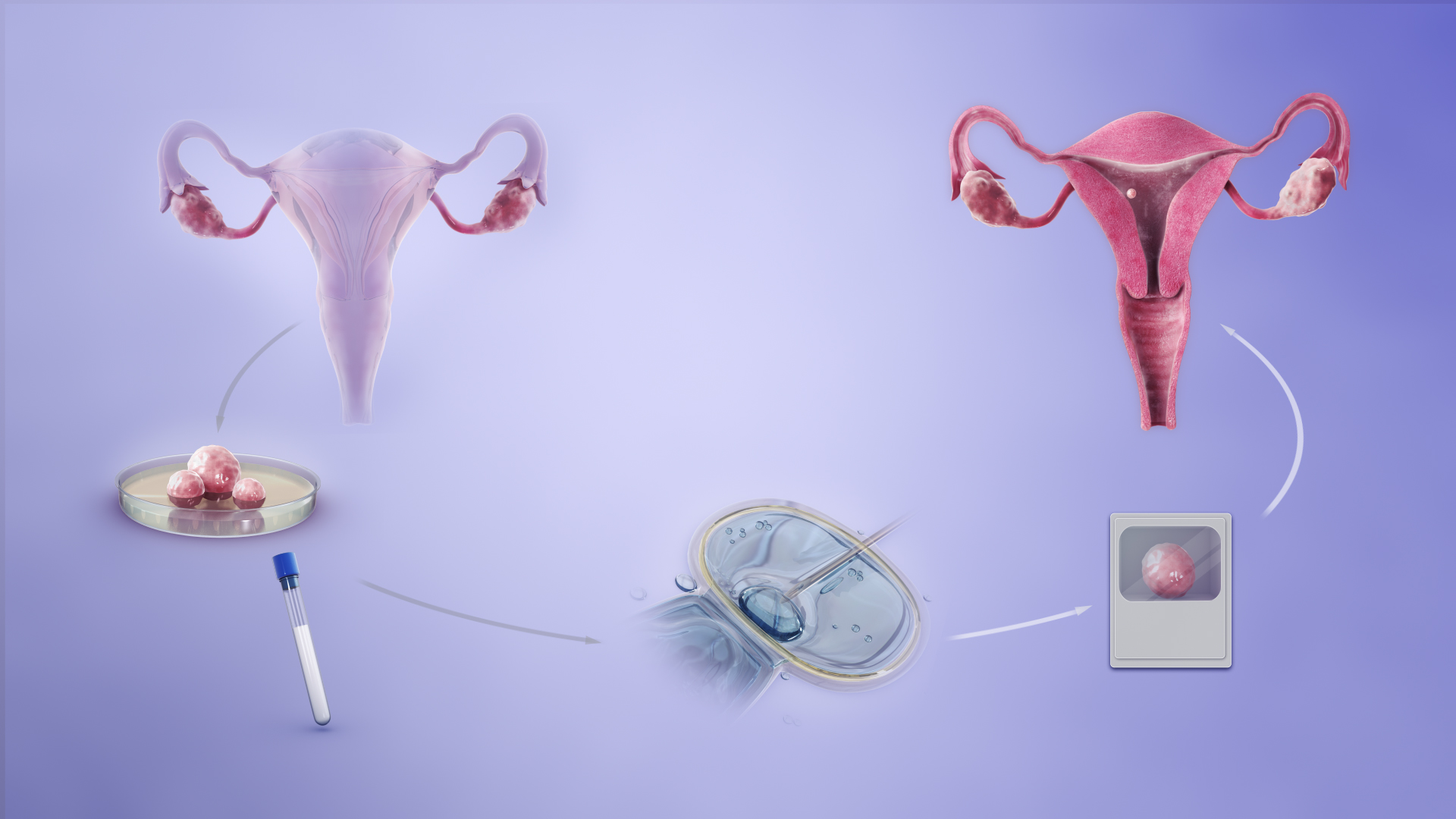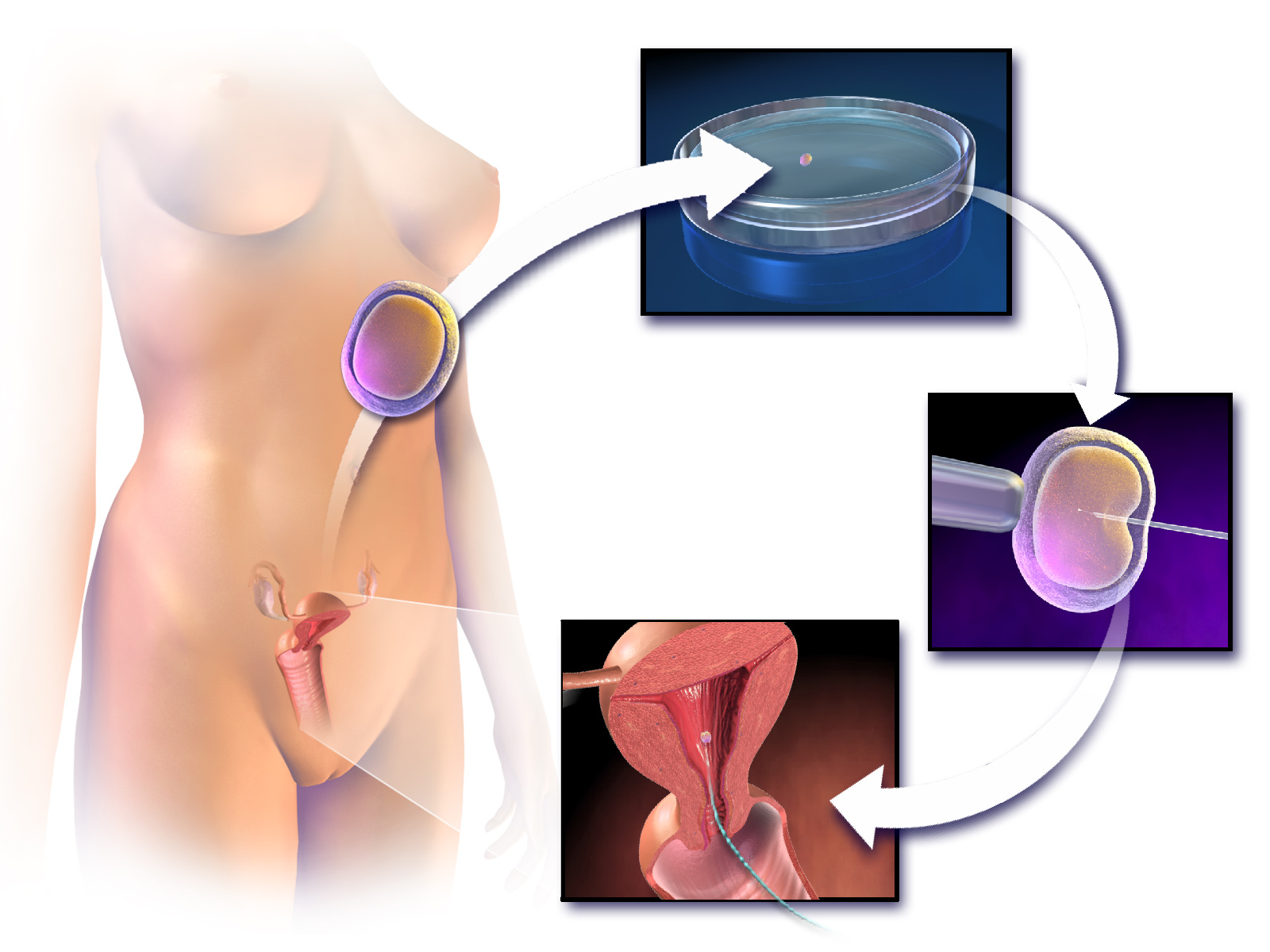|
Asthenozoospermia
Asthenozoospermia (or asthenospermia) is the medical term for reduced sperm motility. Complete asthenozoospermia, that is, 100% immotile spermatozoa in the ejaculate, is reported at a frequency of 1 of 5000 men. Causes of complete asthenozoospermia include metabolic deficiencies, ultrastructural abnormalities of the sperm flagellum (see Primary ciliary dyskinesia) and necrozoospermia. It decreases the sperm quality and is therefore one of the major causes of infertility or reduced fertility in men. A method to increase the chance of pregnancy is ICSI. The percentage of viable spermatozoa in complete asthenozoospermia varies between 0 and 100%. DNA fragmentation Sperm DNA fragmentation level is higher in men with sperm motility defects (asthenozoospermia) than in men with oligozoospermia or teratozoospermia. Among men with asthenozoospermia, 31% were found to have high levels of DNA fragmentation. As reviewed by Wright et al., high levels of DNA fragmentation have been shown ... [...More Info...] [...Related Items...] OR: [Wikipedia] [Google] [Baidu] |
Male Infertility
Male infertility refers to a sexually mature male's inability to impregnate a fertile female. Male infertility can wholly or partially account for 40% of infertility among couples who are trying to have children. "A problem with the male is the sole cause, or a contributing cause, of infertility in about 40 percent of infertile couples. It affects approximately 7% of all men. Male infertility is commonly due to deficiencies in the semen, and semen quality is used as a surrogate measure of male fecundity. More recently, advance sperm analyses that examine intracellular sperm components are being developed. Age considerations Sperm motility increases from puberty through one's mid-thirties. Research shows that from the age of 36 onwards, sperm motility decreases from 40% Grade A & B to 31% in one's 50s. The effects of aging on semen quality is summarized below based on a study of 1,219 subjects: 90% of seminiferous tubules in men in their 20s and 30s contain spermatids, whereas ... [...More Info...] [...Related Items...] OR: [Wikipedia] [Google] [Baidu] |
Spermatozoon
A spermatozoon (; also spelled spermatozoön; : spermatozoa; ) is a motile sperm cell (biology), cell produced by male animals relying on internal fertilization. A spermatozoon is a moving form of the ploidy, haploid cell (biology), cell that is the male gamete that Fertilization, joins with an ovum to form a zygote. (A zygote is a single cell, with a complete set of chromosomes, that normally develops into an embryo.) Sperm cells contribute approximately half of the nuclear gene, genetic information to the diploid offspring (excluding, in most cases, mitochondrial DNA). In mammals, the sex of the offspring is determined by the sperm cell: a spermatozoon bearing an X chromosome will lead to a female (XX) offspring, while one bearing a Y chromosome will lead to a male (XY) offspring. Sperm cells were first observed in Antonie van Leeuwenhoek's laboratory in 1677. Mammalian spermatozoa Humans The sperm cell of ''Homo sapiens'' is the small Gamete, reproductive cell produced by m ... [...More Info...] [...Related Items...] OR: [Wikipedia] [Google] [Baidu] |
Motility
Motility is the ability of an organism to move independently using metabolism, metabolic energy. This biological concept encompasses movement at various levels, from whole organisms to cells and subcellular components. Motility is observed in animals, microorganisms, and even some plant structures, playing crucial roles in activities such as foraging, reproduction, and cellular functions. It is genetically determined but can be influenced by environmental factors. In multicellular organisms, motility is facilitated by systems like the Nervous system, nervous and Human musculoskeletal system, musculoskeletal systems, while at the cellular level, it involves mechanisms such as amoeboid movement and flagellar propulsion. These cellular movements can be directed by external stimuli, a phenomenon known as taxis. Examples include chemotaxis (movement along chemical gradients) and phototaxis (movement in response to light). Motility also includes physiological processes like gastroi ... [...More Info...] [...Related Items...] OR: [Wikipedia] [Google] [Baidu] |
Metabolic Deficiencies
Inborn errors of metabolism form a large class of genetic diseases involving congenital disorders of enzyme activities. The majority are due to defects of single genes that code for enzymes that facilitate conversion of various substances (substrates) into others ( products). In most of the disorders, problems arise due to accumulation of substances which are toxic or interfere with normal function, or due to the effects of reduced ability to synthesize essential compounds. Inborn errors of metabolism are often referred to as congenital metabolic diseases or inherited metabolic disorders. Another term used to describe these disorders is "enzymopathies". This term was created following the study of biodynamic enzymology, a science based on the study of the enzymes and their products. Finally, ''inborn errors of metabolism'' were studied for the first time by British physician Archibald Garrod (1857–1936), in 1908. He is known for work that prefigured the "one gene–one enzyme" hy ... [...More Info...] [...Related Items...] OR: [Wikipedia] [Google] [Baidu] |
Primary Ciliary Dyskinesia
Primary ciliary dyskinesia (PCD) is a rare, autosomal recessive genetic ciliopathy, that causes defects in the action of cilia lining the upper and lower respiratory tract, sinuses, Eustachian tube, middle ear, fallopian tube, and flagella of sperm cells. The alternative name of "immotile ciliary syndrome" is no longer favored as the cilia do have movement, but are merely inefficient or unsynchronized. When accompanied by situs inversus the condition is known as Kartagener syndrome. Respiratory epithelial motile cilia, which resemble microscopic "hairs" (although structurally and biologically unrelated to hair), are complex organelles that beat synchronously in the respiratory tract, moving mucus toward the throat. Normally, cilia beat 7 to 22 times per second, and any impairment can result in poor mucociliary clearance, with subsequent upper and lower respiratory infection. Cilia also are involved in other biological processes (such as nitric oxide production), currently the sub ... [...More Info...] [...Related Items...] OR: [Wikipedia] [Google] [Baidu] |
Necrozoospermia
Necrospermia (or necrozoospermia) is a condition in which there is a low percentage of live and a very high percentage of immotile spermatozoa in semen Semen, also known as seminal fluid, is a bodily fluid that contains spermatozoon, spermatozoa which is secreted by the male gonads (sexual glands) and other sexual organs of male or hermaphrodite, hermaphroditic animals. In humans and placen .... Necrospermia is usually confused with asthenozoospermia, which is the inability of the sperm to move even when alive. To check for necrospermia, samples with a high percentage of immobile sperm are stained to check for vitality. If they are dead sperm they will be stained, as the membrane is broken and the dye enters indiscriminately. Necrozoospermia is a rare condition with a reported prevalence of 0.2–0.48% in infertile subjects.Lecomte PJ, Barthelemy C., Nduwayo L., Hamamah S. (1999) Necrospermia: Etiology and treatment. In: Hamamah S., Olivennes F., Mieusset R., Frydman R. (ed ... [...More Info...] [...Related Items...] OR: [Wikipedia] [Google] [Baidu] |
Sperm Quality
Semen quality is a measure of male fertility Fertility in colloquial terms refers the ability to have offspring. In demographic contexts, fertility refers to the actual production of offspring, rather than the physical capability to reproduce, which is termed fecundity. The fertility rate ..., a measure of the ability of sperm in semen to accomplish fertilization. Semen quality involves both sperm quantity and quality. Semen quality is a major factor in fertility. Cryptorchidism, hypospadias, testicular cancer and poor semen quality make up the syndrome known as testicular dysgenesis syndrome. Factors Many factors influence sperm quality. Exposure to any of the temporary factors can cause up to a three-month delay before sperm quality returns to normal, due to spermiogenesis. General decline A 2017 review and meta-analysis found sperm counts among Western men (i.e. men in Australia, Europe, New Zealand, and North America) declined 50–60% between 1973 and 2011, with an a ... [...More Info...] [...Related Items...] OR: [Wikipedia] [Google] [Baidu] |
Infertility
In biology, infertility is the inability of a male and female organism to Sexual reproduction, reproduce. It is usually not the natural state of a healthy organism that has reached sexual maturity, so children who have not undergone puberty, which is the body's start of fertility, reproductive capacity, are excluded. It is also a normal state in women after menopause. In humans, ''infertility'' is defined as the inability to become pregnant after at least one year of unprotected and regular sexual intercourse involving a male and female partner. There are many causes of infertility, including some that Assisted reproductive technology, medical intervention can treat. Estimates from 1997 suggest that worldwide about five percent of all heterosexual couples have an unresolved problem with infertility. Many more couples, however, experience involuntary childlessness for at least one year, with estimates ranging from 12% to 28%. Male infertility is responsible for 20–30% of infert ... [...More Info...] [...Related Items...] OR: [Wikipedia] [Google] [Baidu] |
Intracytoplasmic Sperm Injection
Intracytoplasmic sperm injection (ICSI ) is an in vitro fertilization (IVF) procedure in which a single sperm cell is injected directly into the cytoplasm of an egg. This technique is used in order to prepare the gametes for the obtention of embryos that may be transferred to a maternal uterus. With this method, the acrosome reaction is skipped. There are several differences between classic IVF and ICSI. However, the steps to be followed before and after insemination are the same. In terms of insemination, ICSI needs only one sperm cell per oocyte, while IVF needs 50,000–100,000. This is because the acrosome reaction has to take place and thousands of sperm cells have to be involved in IVF. Once fertilized, the egg is transformed into a pre-embryo and it has to be transferred to the uterus to continue its development. The first human pregnancy generated by ICSI was carried out in 1991 by Gianpiero Palermo and his team. Round spermatid injection (ROSI) Round spermatid injecti ... [...More Info...] [...Related Items...] OR: [Wikipedia] [Google] [Baidu] |
Sperm
Sperm (: sperm or sperms) is the male reproductive Cell (biology), cell, or gamete, in anisogamous forms of sexual reproduction (forms in which there is a larger, female reproductive cell and a smaller, male one). Animals produce motile sperm with a tail known as a flagellum, which are known as spermatozoa, while some red algae and fungi produce non-motile sperm cells, known as spermatia. Flowering plants contain non-motile sperm inside pollen, while some more basal plants like ferns and some gymnosperms have motile sperm. Sperm cells form during the process known as spermatogenesis, which in amniotes (reptiles and mammals) takes place in the seminiferous tubules of the testicles. This process involves the production of several successive sperm cell precursors, starting with spermatogonia, which Cellular differentiation, differentiate into spermatocytes. The spermatocytes then undergo meiosis, reducing their Ploidy, chromosome number by half, which produces spermatids. The sper ... [...More Info...] [...Related Items...] OR: [Wikipedia] [Google] [Baidu] |
DNA Fragmentation
DNA fragmentation is the separation or breaking of DNA strands into pieces. It can be done intentionally by laboratory personnel or by cells, or can occur spontaneously. Spontaneous or accidental DNA fragmentation is fragmentation that gradually accumulates in a cell. It can be measured by e.g. the comet assay or by the TUNEL assay. Its main units of measurement is the DNA Fragmentation Index (DFI). A DFI of 20% or more significantly reduces the success rates after ICSI. DNA fragmentation was first documented by Williamson in 1970 when he observed discrete oligomeric fragments occurring during cell death in primary neonatal liver cultures. He described the cytoplasmic DNA isolated from mouse liver cells after culture as characterized by DNA fragments with a molecular weight consisting of multiples of 135 kDa. This finding was consistent with the hypothesis that these DNA fragments were a specific degradation product of nuclear DNA. Intentional DNA fragmentation is often neces ... [...More Info...] [...Related Items...] OR: [Wikipedia] [Google] [Baidu] |
Sperm Motility
Sperm motility describes the ability of sperm to move properly through the female reproductive tract (internal fertilization) or through water ( external fertilization) to reach the egg. Sperm motility can also be thought of as the ''quality'', which is a factor in successful conception; sperm that do not "swim" properly will not reach the egg in order to fertilize it. Sperm motility in mammals also facilitates the passage of the sperm through the cumulus oophorus (a layer of cells) and the zona pellucida (a layer of extracellular matrix), which surround the mammalian oocyte. In the wood mouse ''Apodemus sylvaticus'', sperms aggregate in 'trains' that are better able to fertilize eggs because they are more capable of navigating the viscous environment of the female reproductive tract. The trains move in a sinusoidal motion. Sperm motility is also affected by certain factors released by eggs. Sperm movement is activated by changes in intracellular ion concentration. The changes ... [...More Info...] [...Related Items...] OR: [Wikipedia] [Google] [Baidu] |




